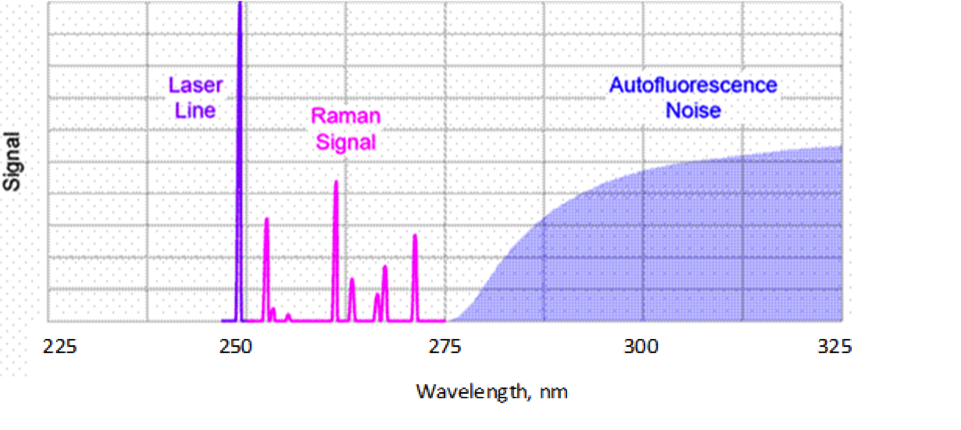High levels of chemical specificity can be obtained using Raman spectroscopy without sample preparation, contact, or destruction. Raman scattering is, in general, a very inefficient process. Normal Raman scatter cross-sections are about 10-26 cm² for a major Raman line. Normal Raman occurs when the excitation wavelength is far from an electronic absorption band of the material. If the excitation wavelength is within a major electronic absorption band associated with the Raman band, the scattering signal is “resonance” enhanced by as much as eight (8) orders or magnitude, such that the scatter cross-section improves to about 10-18 cm². In contrast, maximum resonance autofluorescence cross-sections, measured over a 30nm wide bandwidth near the peak of fluorescence, are about 10-11 cm². This is a factor of 107 improvement over resonance Raman and clearly demonstrates the sensitivity of resonance fluorescence compared to resonance Raman. However, much higher levels of specificity can be obtained with Raman.
Resonance bands for nucleic and aromatic amino acids occur in the deep UV between about 220nm and 280nm. When excited at wavelengths less than 250nm, Raman scattering occurs within about 20nm to 30nm above the excitation wavelength, corresponding to about 4000 cm-1. Fluorescence occurs only above about 280nm, independent of excitation wavelength. Between the excitation wavelength at about 280nm, there exists a fluorescence-free region in which to observe the weak Raman scattering signal. A Raman shift of 4000 cm-1 corresponds to a wavelength of 247nm when excited at 225nm, 278nm when excited at 250nm and 298nm when excited at 266nm. It is therefore ideal to combine UV resonance fluorescence and resonance Raman spectroscopy to form an integrated tool for both detection and identification of biological agents since they offer a great combination of sensitivity and specificity that do not share overlapping observation wavebands.

Get In Touch
Keep informed about the latest deep UV developments at Photon Systems by joining our mailing list.
ADDRESS
1512 Industrial Park St. Covina, CA 91722-3417
PHONE
626 967-6431
